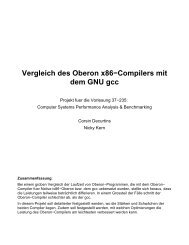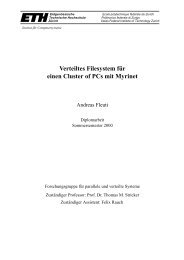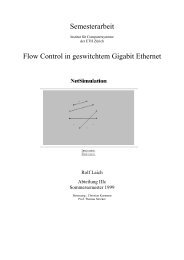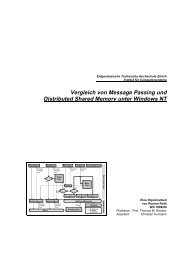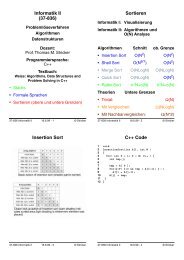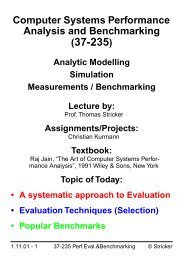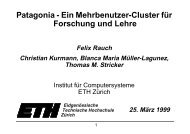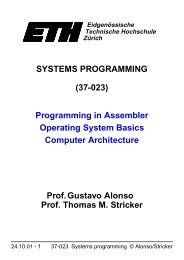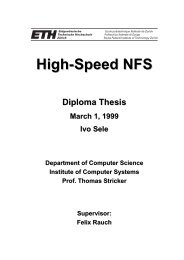serial communication controller (scc ™ sdlc mode of operation - Clips
serial communication controller (scc ™ sdlc mode of operation - Clips
serial communication controller (scc ™ sdlc mode of operation - Clips
You also want an ePaper? Increase the reach of your titles
YUMPU automatically turns print PDFs into web optimized ePapers that Google loves.
Application NoteSerial Communication Controller (SCC ): SDLC Mode <strong>of</strong> OperationTHE SDLC LOOP MODEThe SDLC Loop <strong>mode</strong> is one <strong>of</strong> the protocols used in thering configuration network topology. The typical networkconfiguration is shown in Figure 5. As shown, there is oneMaster (or primary) station and several slave (orsecondary) stations. This figure does not have a clockconnection, but each station’s transmit clock must besynchronized to the master SCC. This can be done byfeeding the clock using a separate clock line, or by usingPhase Locked Loop (PLL) to recover the clock.Master SCCTxRxRxTxRxTxRxTxSlave SCC #1Slave SCC #2Slave SCC #nFigure 5. SDLC Loop Mode ConfigurationThis <strong>mode</strong> is similar to the normal SDLC <strong>mode</strong>, other thanthat secondary stations are not allowed to freely send outpackets. When a secondary station wants to send apacket, it needs to wait for a special pattern to be received.The pattern is called EOP (End Of Poll), and consists <strong>of</strong> a0 followed by seven 1s on the transmission line (as data, itis 11111110). This pattern resembles the SDLC Flagpattern (7EH; 0111110), except the last bit has beenchanged to a 1 thus turning this pattern into a flag.Upon network initialization, secondary station TxD andRxD connections use gate propagation delay. On the firstEOP, a secondary station inserts one bit -time delaybetween RxD and TxD, and relays RxD input to TxD.When it has a message to send out, it waits for an EOP.When it detects EOP in this phase, it changes the last bit<strong>of</strong> the EOP to zero, making it a Flag, then begins to sendits own message. From this point on, normal SDLCtransmission <strong>mode</strong>s apply. Packets conclude with Markidle, identifying it as an EOP pattern. The secondarystation then reverts back to one bit delay <strong>mode</strong>.Figure 6 illustrates this <strong>mode</strong>’s sequence <strong>of</strong> events. Tosimplify the example, this figure assumes there is oneMaster station and one Slave station. If there are moreSlave stations, there will be additional one bit time delayper station after the network has initialized for loop <strong>mode</strong><strong>of</strong> <strong>operation</strong>.6-102



